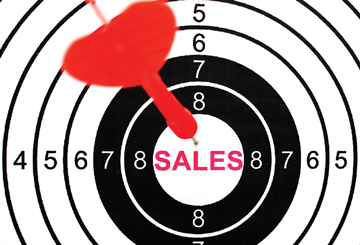BY BILL FAETH
I frequently receive calls from operators asking if they should hire a salesperson. There is no stock answer, but in most cases for small and midsize companies the solution is the same—don’t.
Here’s why: If your annual revenue is less than $1 million, you likely can’t afford the kind of salesperson who is going to drum up new business. In my experience, most operators have neither the skill set nor the time to train and manage a new salesperson.
Here are some proven methods on how to grow on your own without hiring a salesperson.
Develop a “Hot List”
 A “hot list” comprises the customers you are trying to target and any existing relationships that you would be willing to share with others in exchange for an introduction to these prospects. Start with a specific list of 10 to 20 prospects and existing relationships. Once it’s created, share it with your top five professional connections locally to determine who can connect you with your prospects in exchange for introductions to your contacts.
A “hot list” comprises the customers you are trying to target and any existing relationships that you would be willing to share with others in exchange for an introduction to these prospects. Start with a specific list of 10 to 20 prospects and existing relationships. Once it’s created, share it with your top five professional connections locally to determine who can connect you with your prospects in exchange for introductions to your contacts. A hot list can be a powerful way to create warm introductions—or calls that result from having a mutual contact connect you to your prospect—by sharing valuable relationships. The warm introduction should be sent via email from the person making the introductions to both you and the target prospect. This email should include a few sentences that outline how both parties can mutually benefit from getting to know and working with each other.
Once you receive this email, you must reply as quickly as possible (preferably within 30 minutes), both thanking the person for initiating contact and presenting the unique value proposition that you or your company can offer.
Most importantly, you must ask for a meeting. Whether you suggest to meet for coffee, cocktails, or lunch, be sure to provide dates and times of availability to make it easy for your new connection to meet up with you. Set the standards of communication early on.
Create a Simple Sales Process
Creating your sales process seems like a daunting task but it really can be very simple. Think of it as a guide for you to manage your own tasks. The key is to evaluate each stage of the process once implemented and make tweaks based on your closing percentages at every level.Here is a simple process to follow:
• Make contact with your new prospect.
• Enter the prospect into a customer relationship management program, spreadsheet, or email service provider.
• Send an introduction email with your unique value proposition within 24 hours of asking to meet in person.
• Send a follow-up email if there’s no reply within 3-5 business days.
• Hold a meeting and deliver the proposal.
• Follow up with a thank-you email within the same day of the meeting.
• Follow up again in 3-5 business days with a phone call to see if there are any questions or additional value you can provide.
• Close the deal. Mark each prospect as “won” or “lost.”
This is just a sample. You need to make yours work for you and your business, but having a process will help you follow through with your prospects. Be sure to keep a simple spreadsheet if you don’t use CRM to track your close rates at each step so you can modify your approach. You will also have a different process and sales cycle for various types of clients, so adjust accordingly.
Automate Your Follow-Up
We all hear “Follow up, follow up, follow up!” when it comes to sales and leads. But how many times do you actually do it? This is where the sales process breaks down most of the time.We know how valuable the process is because only 2 percent of sales are closed on the first contact, 3 percent on the second, and 5 percent on the third. Not until you contact someone between five and 12 times does the closure rate increase to 80 percent.
To follow up effectively, it is critical that you have the right tools. You don’t necessarily need a heavy CRM like Salesforce, but you must be organized. You also need an email service provider like MailChimp that will allow you to easily create email templates that can be customized and personalized with simple tokens for each contact.
The beauty of MailChimp is that you can create the templates once, target each step of your sales process, and then set the send dates to be delivered based on your sales cycle or contact with your new prospect.
If you have a five-step sales process, you can create five individual emails at one time that are ready to go when you need them. You can even customize these for each prospect without having to start from scratch each time.
Don’t make the cardinal sin of not following up with your “lost” prospects. These people should be nurtured through automated emails with valuable content so you have the opportunity to reacquire them in the future.
By automating your follow-up process, you will increase your opportunity for closing deals and increasing revenue. When you dedicate a few hours of your time each week to generating leads and following up on prospective clients, you will be able to realize results and grow your business without the unnecessary burden of hiring and training a salesperson. [CD0915]

